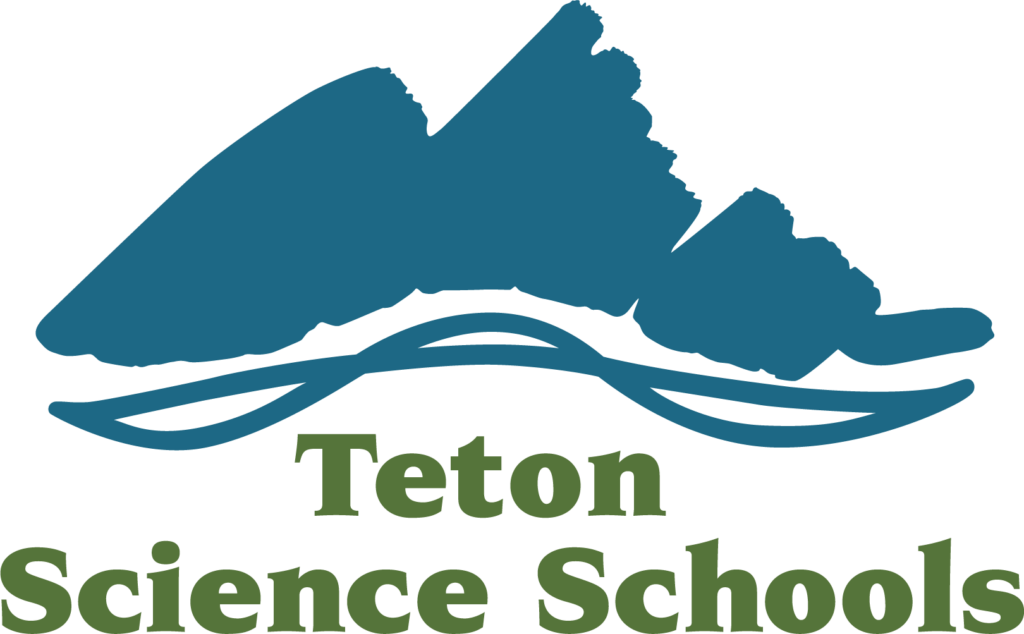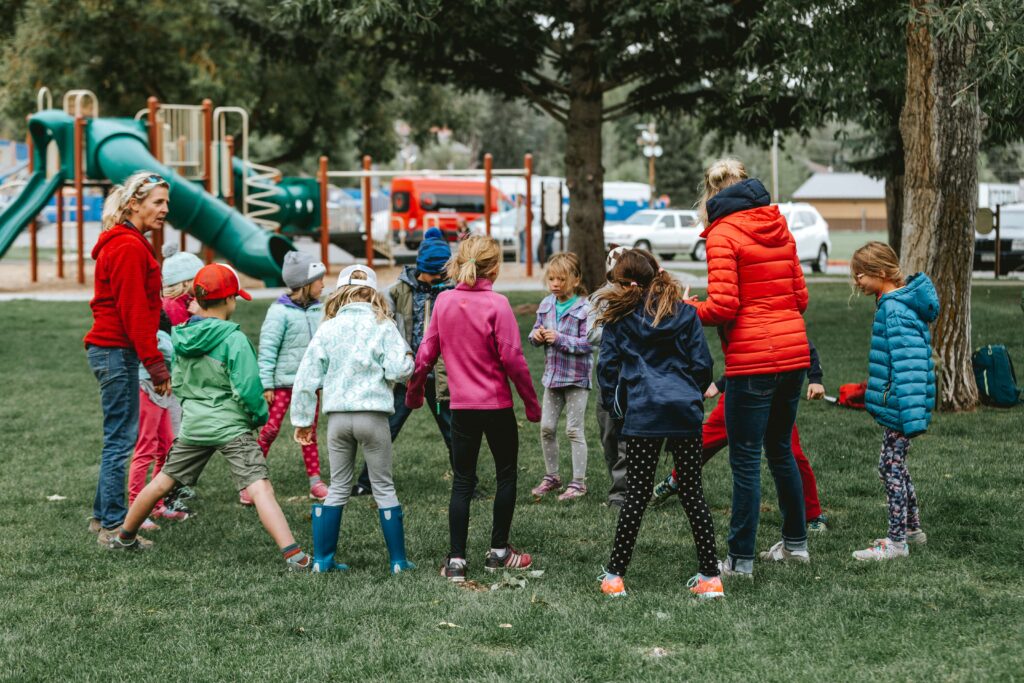When it comes to implementing place-based education, knowing where to start can have even the best of educators feeling equal parts exhilarated and overwhelmed. We get it. The prospect of “anytime, anywhere learning” is exciting and yet, it’s open-endedness can be intimidating. Thoughts that start as “The world is truly my classroom oyster” can quickly turn to
“But, where do I even start?”
“Where is this actually possible?” and
“What does this look like with students once we’re there?”
Rather than let these fears chase away good intentions, we thought we’d break it down and share a round up of six places where place-based education is possible AND what it looks like once you’re there.
If you’re just getting started with place-based education, we recommend starting here.
Five places where place-based learning is possible
1 — In the classroom

Often, the images we see accompanying place-based education articles and posts frame the educational approach as rural and wild — learners exploring gardens and parks, studying streams and investigating open fields — and while all of those places are prime for place-based learning, the classroom is just as powerful. In fact, when getting started, it can be “helpful… to first get students thinking about their own classroom and school before expecting them to think deeply and critically about places outside of their regular daily experience” (source). Not only that, the classroom also provides a safe testing ground for educators dipping their toes in the place-based education waters for the first time.
So what does it look like?
-
- When fourth grade teacher, Caitlin Nichols, jokingly told her students that she had always wanted a bee hive for her yard, their interest was piqued and she knew she had the makings of a meaningful learner-centered, place-based project.
- When 2nd and 3rd grade teachers, Julie Thompsen and Chelsea Troy, at the Teton Science Schools’ independent school noticed their students’ unanimous interest in snakes they knew that they needed to get a snake for their classroom in order to create an authentic learning experience. Says Thompsen and Troy, “Having Harold in the classroom fueled our students’ interest throughout the project, allowing them to observe the everyday behavior of a snake (even eating!) and understand what was involved in owning and caring for a reptile.”
2 — Around the school

Another powerful entry point to place-based learning is one step removed from the classroom: the school itself. Beyond the classroom, students have an opportunity to inquire and investigate, problem-solve and make an impact on issues on their own campus and beyond. Places like school grounds, gardens, playgrounds, gymnasiums and even cafeterias can go from being dull, pass-through locations to engaging, relevant learning environments.
So what does it look like?
-
- Two Wyoming teachers turned a playground game into a full-blown place-based project with their second grade students. Megan and Trista explain in their story, “The first time we tried to play [the game], it didn’t seem very successful. We were outside, it was nice out, and students seemed more excited about running around and chasing each other than they were about what elements animals need to survive. But, when we came inside to teach our lessons — three classrooms full of kids into one classroom — and we presented our slide show, the most amazing thing happened… the kids were quiet and listening!”
- On an exploration around their school’s grounds, Virginia elementary students collected almost 1200 chestnuts in less than an hour. Overwhelmed by the prospect of eating them all, teachers used the opportunity to carry out a place-based project that exposed students to the trials of entrepreneurship and impacted the community in a positive way!
3 — Out in the community

Field trips have long provided educators an opportunity to take their students out of the classroom and into their communities. Done well, they have the opportunity to “increase student engagement, improve understanding and drive deeper learning” (source). They also allow for educators and students to put the curriculum within the context of real-world issues happening inside their own community. Connected to the place in which students are living in, learning now has the opportunity to become more meaningful and impactful, not just for the student, but the community as well.
So what does it look like?
-
- Second and third grade students from Teton Science School’ independent school took an observation they made on a school field trip–why was the visitor center closed on a day it would normally be open?–and turned it into a full blown investigation into food security in their community.
- At Place Network school, Koshkonong Trails, students utilize the power of place and the experts in their community to carry out projects of their own interests. Projects covered a wide-range of topics from body image to bike shops, rotary engines to land regeneration and wildland firefighters. They even plan an entire day to share their learning with the rest of the K-2 students in their district.
4 — Wild places

National parks have recently been coined “America’s Best Idea” and we here at Teton Science Schools can’t disagree. National parks are our classroom. What wild places have to offer outside of our classrooms and communities are opportunities to transcend disciplines and create learning experiences that are emotionally, personally and socially valuable. It’s why students feel compelled to create their own documentation of their experiences — via Youtube, Instagram, etc. — even when there was never a requirement to do so. Because let’s face it, learning about glaciers in the classroom is cool, but learning about glaciers when you’re standing on a trail at the base of the Tetons, alongside a glacial lake, looking up at a glacier is even cooler.
So what does it look like?
-
- For 12 years, Science Coordinator for the Columbia School District, Mike Szydlowski, has been bringing students from Missouri for a summer experience with Teton Science Schools. In our interview with him, he explains that “every year [this trip] gets more important…seeing the students’ reactions when they’re here is so exciting. Their favorite parts are always the outdoors and wanting to be out there…parents say over and over that their kids are different when they come home.”
- Teton Science Schools alumnus, Coulter Stone, uses wild places to inspire a connection to earth, foster healing and instill values of self-reliance, self-care and resilience in young people at Open Sky Wilderness.
5 — The virtual world

Place-based education research is just beginning to understand the potential value of bringing the world into the classroom through virtual, place-based learning experiences. With the constraints often felt by educators when attempting to organize traditional field trips — like budget, time, transportation, permission and a host of others — virtual field trips provide an opportunity to transport students outside their classroom, immerse them in places they wouldn’t otherwise be able to visit and connect them with experts within their own communities, but also, well beyond.
So what does it look like?
-
- In California, fourth-grade teacher, Brandon Wislocki took his students around the world in 80 (school) days thanks to virtual field trips. He explains, “virtual field trips have completely changed the way my students experience the world outside our school’s walls…students are incredibly engaged through these virutal learning experiences and often get excited to visit new places…” He also describes four virtual field trips that had his students glued to their screen.
- At Parklands College in South Africa, Louis Pienaar challenged students to design a hypothetical eco-city using virtual reality creation technology. He explains, “This created a place-based interdisciplinary project where students drew from English, history and geography and applied their knowledge to a contemporary challenge in a local context.”
At the end of the day, there are just as many ways to implement place-based education as there are places in which to implement it. There’s no one right way or place to do it and that’s the beauty of it!


